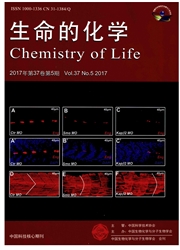

 中文摘要:
中文摘要:
多发性硬化是一类中枢神经系统炎症性脱髓鞘疾病,其发病原因目前尚未明确。深入地研究该疾病的发生发展机制将为临床预防及治疗提供更有效的帮助。髓鞘是中枢神经系统重要的生理结构,主要发挥保护轴突和加速神经冲动传导的作用。在成年中枢神经系统,髓鞘损伤后可以由少突胶质前体细胞经增殖、迁移和分化而重新形成,即髓鞘再生。然而,在慢性多发性硬化症患者的病灶中,由于少突胶质前体细胞分化障碍,导致髓鞘再生减弱,进而造成轴突损伤和神经元丢失,发生不可逆的神经功能障碍,是进展型多发性硬化发生的重要原因。因此,研究进展型多发性硬化患者病灶中少突胶质前体细胞的分化障碍及其相关信号机制对于临床治疗和药物开发具有重要意义。本综述将着眼于少突胶质前体细胞的分化调控机制,分析其在进展型多发性硬化病理发生中的作用和意义,并讨论了相关的潜在治疗靶点.
 英文摘要:
英文摘要:
Multiple sclerosis (MS) is an inflammatory demyetination disease of the central nervous system (CNS) and its pathogenesis is not yet clear. Intensive studies on the occurrence and development of the disease will provide great assistance for clinical prevention and treatment. Myelin is an important physiological structure of the nervous system. It plays an important role in protecting the axon and accelerating the transmission of nerve impulse. In the adult CNS, myelin damage can be repaired by the proliferation, migration and differ- entiation of the oligodendrocyte precursor cells (OPCs), which is called remyelination. However, remyelin- ation often failed in the chronic MS lesions due to impaired OPCs differentiation. The failure of remyelination also could lead to axonal damage and irreversible neurological dysfunction, which is an important cause of progressive MS. Therefore, it is of great significance for clinical treatment and drug development to study the differentiation of the OPCs and its related signaling mechanisms in the lesions of patients with progressive MS. This review will focus on the roles and significances of the differentiation and regulation mechanism of the OPCs in the pathogenesis of progressive MS and discuss the potential therapeutic targets of this disease.
 同期刊论文项目
同期刊论文项目
 同项目期刊论文
同项目期刊论文
 期刊信息
期刊信息
